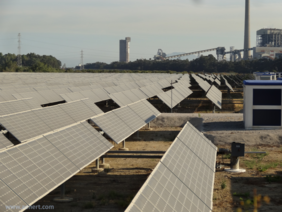Every year since 2005 the global multi-stakeholder network REN21 releases the Renewables Global Status Report (GSR), providing a comprehensive overview on the current state of renewable energy in the world. GSR-2018 analyses the year 2017, pointing out, first of all, that in 2017 70% of the net increase in power generation in the world fell on renewable sources, which is a record in modern history. In addition, among the positive trends are a reduction in the cost of producing renewable energy, an increase in investment and advances in technology development. Researchers also note that the areas of heating, cooling and transport are noticeably lagging behind the electric power sector, showing only minor positive changes in the introduction of renewable energy.
According to the report, 178 gigawatts (GW) of renewable energy were added worldwide in 2017, mainly due to solar and wind resources. The total global renewable energy capacity at the end of 2017 was 2.195 GW (9% more than in 2016). Leading countries in total renewable energy capacity were China, USA, Brazil, Germany and India. The absolute leader, China, has 30% of the world's renewable energy capacity (about 647 GW). If we look at power per capita (without hydro-energy), European countries such as Iceland, Denmark, Germany, Sweden and Finland are at the top of the list in this category. The top 5 countries investing in renewable energy are China, USA, Japan, India and Germany.
The key findings of the GSR-2018 for individual renewable energy technologies are:
- SOLAR PHOTOVOLTAICS (PV). Solar energy is the main force of progress in the renewable sector. The global PV capacity increased by one third in 2017, with a total of 402 gigawatts at the end of the year. The role of solar photovoltaics in power generation is growing rapidly and has a significant share in countries such as Italy, Greece, Germany, Japan and Honduras.
- WIND POWER. 2017 is characterized by a significant drop in prices in both offshore and onshore wind power. In 2017, wind power added about 52 GW, thus increasing the total capacity to 539 GW, which is 11% more compared to 2016. 2017 was a record year for the offshore wind energy sector, whose share increased by 30%.
- HYDROPOWER. Around 19 GW was added to the hydropower sector in 2017, increasing global total capacity to 1,114 GW. This is the lowest annual increase over the past five years. China accounts for 40% of new capacities introduced in 2017.
- BIOMASS ENERGY. Modern bioenergy (traditional biomass not included) provided about two thirds of thermal energy from renewable sources in 2017. Bioenergy electricity production increased by about 11%. China has overtaken the United States, becoming the bioelectricity production leader. The global production of biofuels for transport increased in 2017 by 2.5%.
- GEOTHERMAL. According to the report, 0.7 GW of new geothermal capacity was introduced in 2017, resulting in a total capacity of 12.8 GW. Indonesia and Turkey account for about half of the recently introduced capacity.
- CONCENTRATING SOLAR THERMAL POWER (CSP). In this sector, global capacity is around 4.9 GW, 100 MW of which came online in 2017. Spain leads the CSP and in 2017 the country achieved a record level of electricity production through CSP.
- OCEAN ENERGY. This is the weakest renewable energy sector, which has a total operating capacity of just 529 MW, over 90% of which in 2017 was represented by two tidal barrage facilities located in France and the Republic of Korea.
Another interesting fact is that in 2017, 1.2 million passenger electric cars were sold, which is 58% more than in 2016. 1.3% of the energy demand for transport is provided by electricity, of which about a quarter is renewable. However, in general, 92% of the transport energy needs is traditionallycovered by oil.
In 2017 the renewable energy sector employed 10.3 million people, which is 5% more than in 2016, with the main source of jobs having been created in the solar energy sector.
